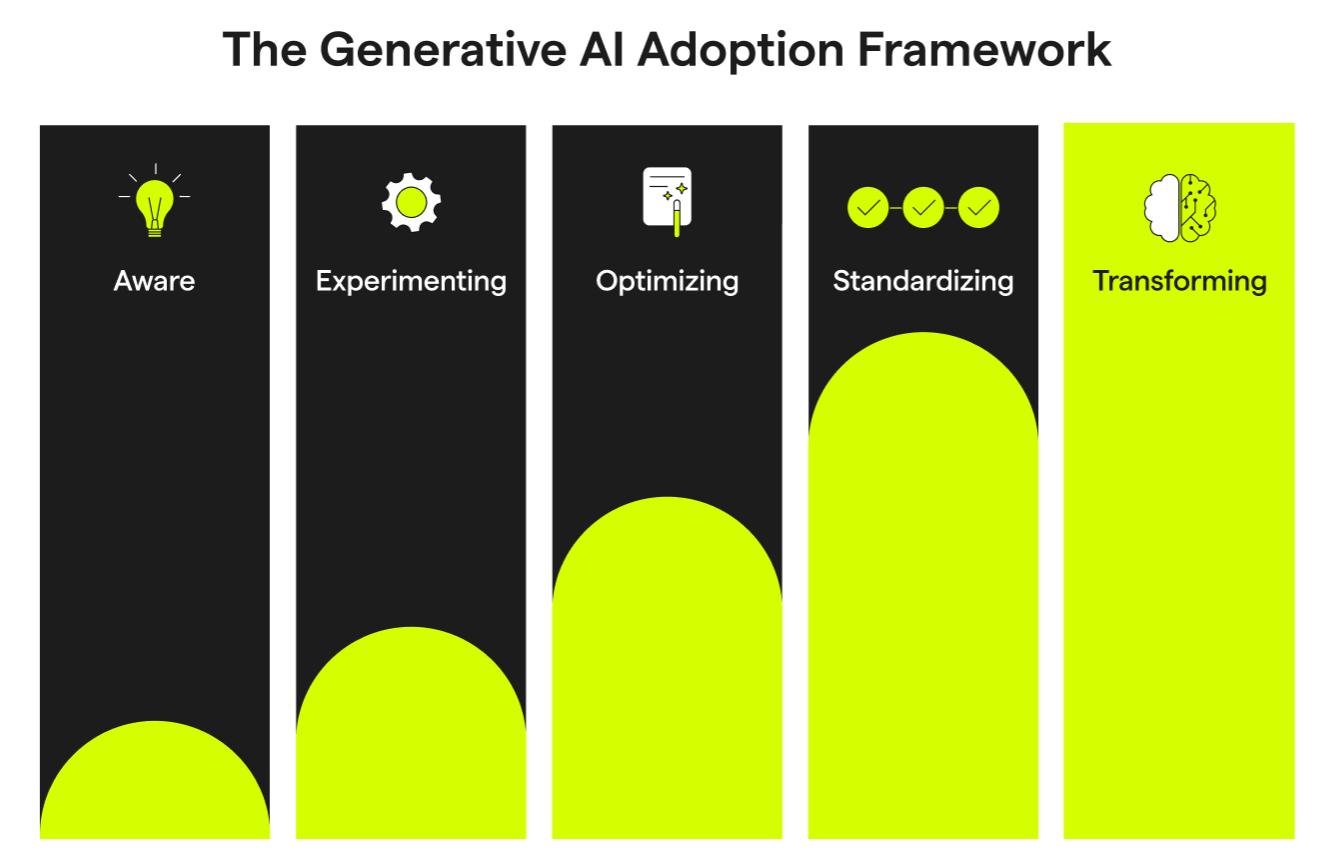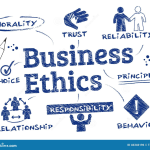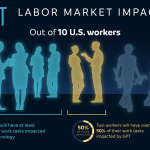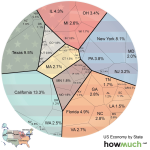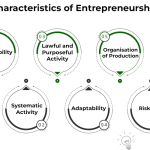Generative AI adoption is rapidly reshaping how businesses operate, showcasing a remarkable speed unmatched by previous technologies like the internet and personal computers. This innovative AI technology is now integral in the workplace, with nearly 40 percent of Americans embracing it for various tasks, both at home and in their professional environments. The benefits of generative AI are becoming increasingly evident as it streamlines workflows, enhances creativity, and boosts productivity across multiple sectors. According to recent generative AI statistics, younger individuals and those in white-collar jobs are leveraging this technology at significantly higher rates, indicating a shift in the workforce’s approach to AI integration. As organizations recognize the profound impact of AI on the economy, they are compelled to stay ahead of the curve in adopting these groundbreaking tools.
The surge in adopting innovative AI systems, particularly those capable of content generation, reflects a broader trend towards digital transformation in various sectors. Alternative terms like “creative AI tools” and “machine learning applications” illustrate the diverse functionalities these technologies bring to both personal and professional tasks. As more individuals harness the power of these intelligent solutions, the potential for increased efficiency and productivity becomes clear, positioning generative AI as a cornerstone of modern operational strategies. The swift uptake of these tools is indicative of changing attitudes and showcases a generational shift towards embracing advanced technologies that significantly shape our daily processes. Understanding these developments is crucial for business leaders striving to capitalize on the substantial opportunities presented by the AI landscape.
The Rise of Generative AI in the Workplace
The recent surge in interest and usage of generative AI tools like ChatGPT marks a significant shift in how technology integrates into our daily tasks, particularly in the workplace. According to recent studies, nearly 40 percent of Americans aged 18-64 have utilized generative AI to streamline their work processes, a figure that surpasses initial adoption rates of the personal computer and the internet. This rapid acceptance suggests that businesses and employees alike are recognizing the potential benefits of generative AI, which not only boosts efficiency but also fosters creativity by leveraging existing data to produce new content and ideas.
The implications of this technology go beyond mere productivity enhancements. By automating routine tasks such as email drafting, data analysis, and content creation, generative AI allows employees to focus on more strategic initiatives. Industries are witnessing a transformation in job roles, where employees who leverage AI tools can outperform their peers and contribute to higher overall organizational performance. As generative AI becomes further entrenched in business practices, understanding its adoption in the workplace will be crucial for maintaining competitive advantage.
Understanding Generative AI’s Economic Impact
The economic ramifications of generative AI adoption are profound and expansive. With a considerable portion of the workforce engaging with this technology, we can expect significant shifts in various sectors. As generative AI tools become more integrated into everyday work processes, they may potentially reshape labor markets, demanding new skill sets and altering the landscape of existing occupations. The increased efficiency gained from these tools could lead to higher productivity and economic growth, spotlighting the importance of AI technology trends that emphasize adaptability and workforce reskilling.
Moreover, as businesses experiment with generative AI applications, they are likely to discover new revenue streams and innovative business models. The versatility of generative AI allows organizations to create tailored solutions that meet specific consumer needs, thereby generating unprecedented economic value. As companies invest in technological infrastructure and seek to harness the capabilities of generative AI, it will be vital for policymakers to understand these trends to ensure that labor forces are prepared for the evolving demands of the economy.
Demographic Trends in Generative AI Adoption
Recent analyses indicate significant demographic differences in the adoption of generative AI technology. Reports show that younger individuals, especially those in higher education and technical fields, are more inclined to utilize these tools compared to their older counterparts. This trend is reflective of how engagement with technology often correlates with education levels and occupational sectors. For instance, white-collar jobs, particularly in STEM fields, showcase higher rates of generative AI use, pointing to the need for tailored educational programs that equip future workers with necessary AI competencies.
Conversely, this demographic divide raises questions regarding access and inclusivity in technology utilization. While generative AI’s reach has extended to various occupations, including blue-collar sectors, the disparities in utilization emphasize the importance of outreach and training programs. Embracing generative AI technology means recognizing the diverse capabilities and potential gaps among different demographic groups, ensuring that all workers can thrive in an increasingly digital economy.
Strategic Insights for Business Executives
Given the rapid adoption of generative AI and its projected impact on the economy, business executives must prioritize understanding and leveraging this technology. The insights gathered from national surveys offer foresight into the potential of generative AI to transform operations across industries. Ignoring this trend could lead to missed opportunities for innovation and competitive edge. As organizations seek to integrate AI solutions, they should continuously monitor emerging technologies and adapt their strategies accordingly to align with evolving consumer needs and market conditions.
Moreover, fostering a culture of experimentation and feedback within the organization can facilitate the successful integration of generative AI. Encouraging teams to explore different applications can yield insights into effective use cases and potential pitfalls. As companies navigate this technological landscape, they should not only focus on immediate benefits but also consider long-term implications, such as workforce development and ethical considerations surrounding AI deployment. The businesses that adapt quickly and responsibly will likely position themselves favorably in the new AI-driven economy.
Navigating the Future of Work with Generative AI
The transformative potential of generative AI is set to redefine the future of work. Organizations that embrace these tools can expect not only efficiency gains but also enhanced creativity and innovation within their teams. As individuals become accustomed to AI-assisted tasks, the dynamics of collaboration may shift, prompting new roles that combine human creativity with AI capabilities. The partnership between AI technology and the workforce will need to be carefully managed to harness its advantages while addressing concerns about job displacement and ethical use of AI.
Furthermore, preparing for this new era of work involves significant investment in training and reskilling existing employees. As generative AI tools evolve, businesses must ensure that their personnel are not only adept at using these tools but also capable of understanding the underlying concepts of AI and data analytics. Companies will benefit from creating learning environments that encourage continuous growth and development, fostering a workforce that is adaptable to changes brought about by generative AI and other advancements in AI technology.
Generative AI Statistics: Insights and Implications
Understanding generative AI through statistical data provides valuable insights into its usage trends and implications across various sectors. Reports indicate that nearly 40 percent of U.S. adults have interacted with generative AI, highlighting a rapid integration of this technology into daily tasks at work and home. These statistics not only illustrate the technology’s acceptance but also underscore its potential to create efficiencies across industries, informing businesses about where their investments in AI might yield the highest returns.
In addition to general usage statistics, examining specific metrics related to generative AI applications reveals patterns in workforce engagement and task automation. For example, many users report utilizing generative AI for writing, analytical tasks, and creative projects, suggesting a broad spectrum of applications ranging from administrative support to strategic planning. These insights can guide organizations in identifying key areas where investment in AI tools could enhance productivity and foster innovation, shaping the future landscape of work.
The Role of Generative AI in Economic Growth
As generative AI technology continues to gain traction, its role in driving economic growth cannot be understated. By enabling faster and more efficient processes, businesses are likely to experience increased productivity, which directly contributes to economic output. Moreover, the ability to analyze vast datasets with generative AI can lead to more informed decision-making within companies, ultimately fostering an environment conducive to innovation and growth. This potential shows that generative AI is not merely a tool for automation but a catalyst for economic transformation.
Additionally, the widespread application of generative AI across different sectors can stimulate job creation, particularly in tech-related fields. As organizations seek to harness the capabilities of AI, there will be a growing demand for professionals skilled in AI technologies, further enhancing the job market. Policymakers and business leaders must recognize this synergy between generative AI and economic growth to ensure that workforce development initiatives are implemented, equipping individuals with the needed skills to succeed in an AI-driven economy.
Generative AI and Its Influence on Innovation Trends
Generative AI not only alters the way tasks are accomplished but also sets the stage for new innovation trends across various industries. As organizations integrate these advanced technologies, they unlock new possibilities for product development, services, and customer engagement strategies. Harnessing generative AI allows businesses to rapidly prototype ideas and assess market needs, shortening the time it takes for innovations to move from concept to implementation.
Furthermore, the synergy created by generative AI encourages collaboration among diverse teams, enabling cross-functional insights that can lead to groundbreaking advancements. In sectors ranging from marketing to engineering, the innovation landscape is shifting as companies leverage AI to not only enhance traditional methods but also to pave the way for entirely new approaches to problem-solving and value creation. As generative AI continues to evolve, so too will its role in driving transformative innovation that shapes the future of various industries.
Ethical Considerations in Generative AI Deployment
The swift adoption of generative AI raises critical ethical considerations that organizations must address to ensure responsible integration of technology. Issues such as data privacy, bias in AI algorithms, and the potential for misinformation necessitate a proactive approach to governance. Companies should prioritize establishing guidelines and frameworks for ethical AI usage that take into account the ramifications of generative AI on various stakeholders, including consumers, employees, and society at large.
To effectively navigate these challenges, businesses need to foster transparency and accountability in their AI initiatives. Engaging stakeholders in discussions about the ethical implications of generative AI can help cultivate a culture of responsible innovation. As organizations strive to balance technological advancement with ethical standards, they will not only enhance their reputation but also build trust with consumers, positioning themselves as leaders in the responsible development and application of AI technologies.
Frequently Asked Questions
What is generative AI adoption and how does it compare to AI in the workplace?
Generative AI adoption refers to the widespread use of artificial intelligence technologies that generate content from existing data, like ChatGPT. Compared to prior tech innovations like personal computers and the internet, generative AI is being embraced more rapidly in the workplace, with about 28% of employed U.S. adults utilizing it for various tasks.
What are the key benefits of generative AI in the workplace?
The key benefits of generative AI in the workplace include increased productivity, enhanced creativity, and the ability to automate repetitive tasks. Companies can leverage generative AI to streamline operations, saving time and resources while improving overall efficiency.
What are the latest AI technology trends influencing generative AI adoption?
AI technology trends influencing generative AI adoption include a focus on user-friendly interfaces, integration with existing applications, and advancements in natural language processing. These trends make generative AI tools more accessible and practical for everyday use in business environments.
What do generative AI statistics reveal about its current adoption rate in the U.S.?
Recent generative AI statistics indicate that nearly 40% of U.S. adults have used this technology, with a notable 28% using it at work. This adoption rate surpasses that of the internet and personal computers during similar timeframes, suggesting a strong and rapid integration into daily tasks.
What impact does generative AI have on the economy?
Generative AI has a significant impact on the economy by driving productivity gains and enabling new business models. As more industries adopt this technology, we can expect innovation in product offerings and services, which may lead to economic growth and job creation in tech-driven sectors.
How is generative AI being utilized both at work and at home?
At work, generative AI is used for tasks like drafting emails, generating reports, and aiding in decision-making processes. At home, individuals use it for content creation, learning, and personal projects. This dual usage showcases its versatility and integration into various aspects of daily life.
Why is generative AI adoption faster than previous technological advancements?
Generative AI adoption is faster due to the established presence of computers and the internet, which serve as foundational technologies. This existing infrastructure enables users to integrate generative AI tools more seamlessly, promoting quicker acceptance and usage across demographics.
What demographic factors influence generative AI adoption in the workplace?
Demographic factors influencing generative AI adoption include age, education, and occupation. Younger individuals and those with higher education levels are more likely to adopt generative AI, while usage tends to be higher in STEM fields, reflecting broader trends observed with previous technologies.
Should businesses be concerned about generative AI adoption trends?
Yes, businesses should be concerned about generative AI adoption trends as these tools will reshape industries and competitive landscapes. Organizations that quickly adapt and incorporate generative AI into their operations are likely to gain significant advantages, driving innovation and efficiency.
What practical steps can organizations take to leverage generative AI technologies?
Organizations can leverage generative AI technologies by investing in training for employees, integrating AI tools into existing workflows, and exploring innovative applications for content generation and process optimization. This proactive approach can foster a culture of innovation and adaptability.
| Key Point | Details |
|---|---|
| Generative AI Adoption Rates | 40% of Americans aged 18-64 have used generative AI; 28% at work and 33% at home. |
| Speed of Adoption | Generative AI’s adoption rate (39.4%) is faster than both personal computers and the internet. |
| Demographics of Use | Usage is higher among men, younger individuals, college graduates, and those in white-collar jobs. |
| Importance for Businesses | Understanding generative AI’s rapid adoption can guide business strategies and technological investment. |
| Future Implications | Investing in generative AI can yield significant competitive advantages and innovative applications. |
Summary
Generative AI adoption is accelerating rapidly, surpassing previous technological milestones such as the internet and personal computers. With nearly 40% of Americans already engaging with generative AI tools, businesses must recognize the substantial opportunity this presents. This swift uptake highlights a significant shift in how technology becomes integrated into the workplace and daily lives, emphasizing the need for companies to invest strategically in generative AI adaptations and applications. To remain competitive and innovative, executives must closely monitor and embrace the trends in generative AI adoption, ensuring they harness its potential effectively.
